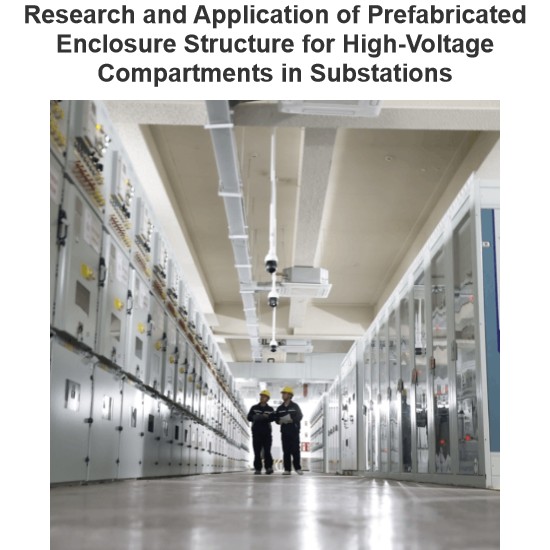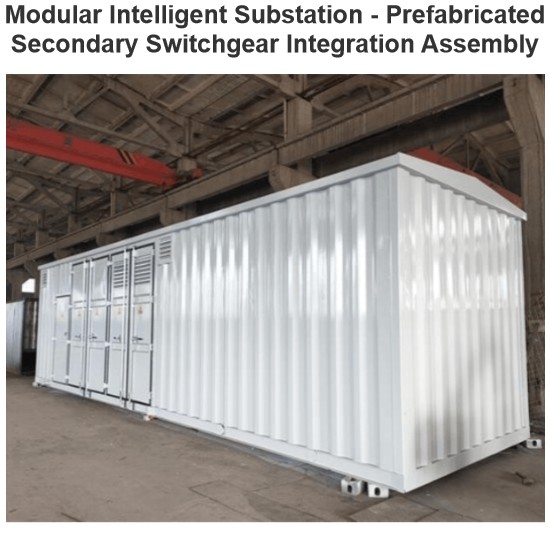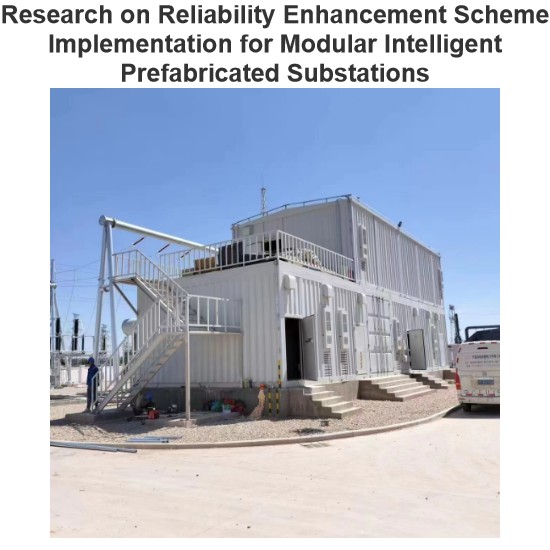In recent years, driven by policies and the enabling environment, the domestic new energy industry has achieved rapid development. A large number of photovoltaic (PV) projects have been introduced into the power market, and high-altitude PV projects are among them. If prefabricated cabin substations can be utilized scientifically and rationally, high-altitude PV projects can feature short construction cycles, quick commissioning, and relatively low investment levels. This is of great significance for the implementation of PV projects in high-altitude areas. Therefore, the following article will elaborate on the application of prefabricated cabin substations in high-altitude PV projects and also put forward some targeted and constructive suggestions.
1. Advantages of Prefabricated Cabin Substations
1.1 Short Construction Cycle and Easy Control of Construction Quality
As time goes by, the drawbacks of traditional substation construction have become increasingly apparent. Among them, prefabricated cabin substations are characterized by relatively short construction periods. With factory-based processing for control and construction, standardized production, and modular assembly, they have the features of a relatively short construction cycle, less on-site work, and relatively high quality standards during actual construction.
Thus, they can meet the requirements such as “short construction cycle and quick commissioning” in the construction of domestic new energy projects. Moreover, prefabricated cabin substations are all installed using prefabricated cabins and modular equipment. Generally, only installation and wiring work is needed at the construction site because the wiring and relevant debugging work for many electrical secondary devices are already completed in the factory. As a result, the on-site workload is greatly reduced, production achieves a high level of intensification, and the construction period is thus significantly shortened.
1.2 Small Floor Area and Relatively Low Total Investment
Through optimized integration, prefabricated cabin substations have greatly improved the overall layout of the substation, and the positioning of relevant equipment has also been optimized. This has significantly reduced the floor area of the substation. Compared with the organizational structure and buildings of traditional substations, it can be seen that prefabricated cabin substations do not have a main building, and both high-voltage and low-voltage electrical rooms are in the form of prefabricated cabins.
This has greatly reduced the floor area of prefabricated cabin substations, resulting in a relatively low total investment. Simply put, the application of prefabricated cabin substations in high-altitude PV projects can achieve relatively high cost-effectiveness. According to relevant research and investigations, compared with traditional substations, prefabricated cabin substations can save about 20% in floor area and can achieve a reduction of about 5% - 10% in total investment.
2. Overview of the Application of Prefabricated Cabin Substations in High-Altitude PV Projects
In recent years, with the rapid development of domestic social economy and science and technology, and supported by relevant policies and the environment, the domestic PV industry has entered a process of healthy development. Driven by both external policies and market demand, high-altitude PV projects have put forward new and higher requirements in terms of cost, technology, and operation. This is one of the main reasons for applying prefabricated cabin substations in high-altitude PV projects. In the actual application process of prefabricated cabin substations in high-altitude PV projects, a significant amount of construction time can be saved. Moreover, when carrying out PV project work in high-altitude areas, the project itself involves relatively many favorable conditions.
Working at high altitudes, where the oxygen content is relatively low, will have a certain impact on the health of relevant workers. However, after the application of prefabricated cabin substations in high-altitude PV projects, a modular intelligent substation solution can be adopted. Using the concept of factory prefabrication, relevant electrical equipment is placed in double-layer, sealed, heat-insulating, and corrosion-resistant prefabricated cabins. The design of the cabins needs to meet national and international standards, and the installation, wiring, and debugging of relevant electrical equipment are completed in the factory. After the completion of delivery-style operation and maintenance, the application of prefabricated cabin substations in high-altitude PV projects is thus realized.
Generally, after the equipment arrives at the high-altitude area, the overall construction of the prefabricated cabin substation can be completed within one week. That is to say, with rapid construction, the production cycle of equipment processing takes about three months, and the on-site construction takes about one month to complete the power transmission. This is something that traditional substations cannot achieve. Therefore, the application of prefabricated cabin substations in high-altitude PV projects solves problems such as long substation construction cycles. Moreover, after a successful one-time power transmission, it can be put into use. Compared with traditional substations, the advantages are very obvious. However, in the actual application process, attention needs to be paid to the equipment transportation aspect, and efforts should be made to improve its speed and safety as much as possible.
3. Significance of Prefabricated Cabin Substations in Terms of Energy Conservation and Environmental Protection
During operation, prefabricated cabin substations can provide a good environment for the power system, thereby achieving energy conservation and consumption reduction, which is a very important part of modern environmental protection endeavors. Moreover, for PV projects in high-altitude areas, the environment is generally relatively harsh, such as in Gobi deserts, mountainous areas, etc. Coupled with the natural environment of high altitudes, it will bring relatively high work pressure to workers.
For the application of prefabricated cabin substations in high-altitude PV projects, their shells are made of waterproof, heat-insulating, and thermal-insulating materials. This can play a role in heat insulation in summer and thermal preservation in winter. Moreover, the overall sealing performance of prefabricated cabin substations is significantly better than that of traditional substations, and they also have good anti-corrosion performance. The production and processing are completed in the factory, with relatively little material waste and energy consumption, basically achieving green manufacturing. This is a main manifestation in terms of clean energy and environmental protection and can also enable prefabricated cabin substations to operate normally and stably in the harsh environment of high altitudes.
4. Conclusion
To sum up, the above is the relevant research and analysis on [the application of prefabricated cabin substations in high-altitude PV projects] so far. From the content described in the article, it can be seen that traditional substations cannot meet the needs of PV projects in high-altitude areas. Therefore, it is necessary to vigorously promote the application of prefabricated cabin substations in high-altitude PV projects. This can bring about relatively significant changes to the construction of contemporary new energy projects, thereby shortening the project construction cycle and improving the economic benefits of high-altitude PV projects.













